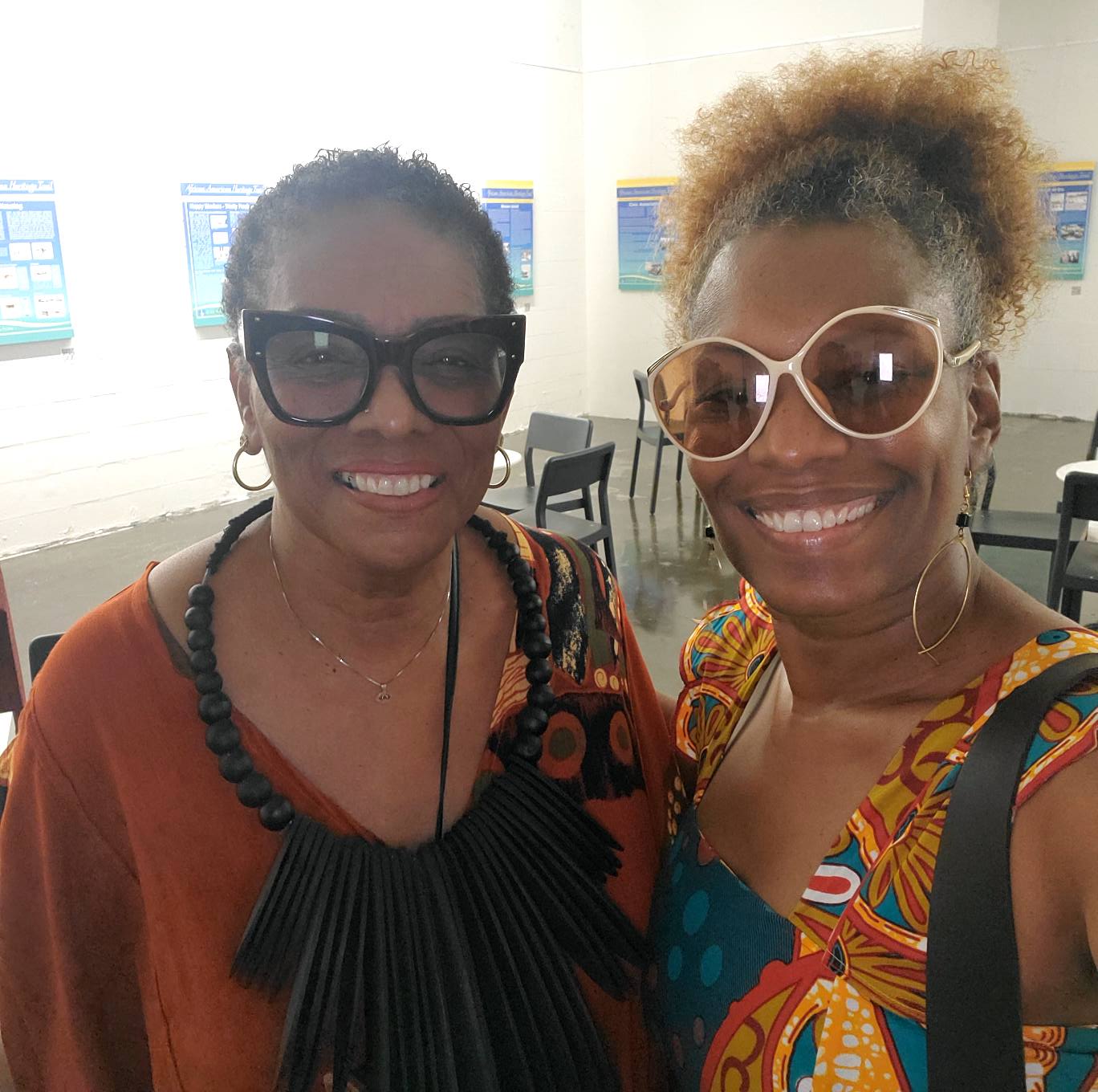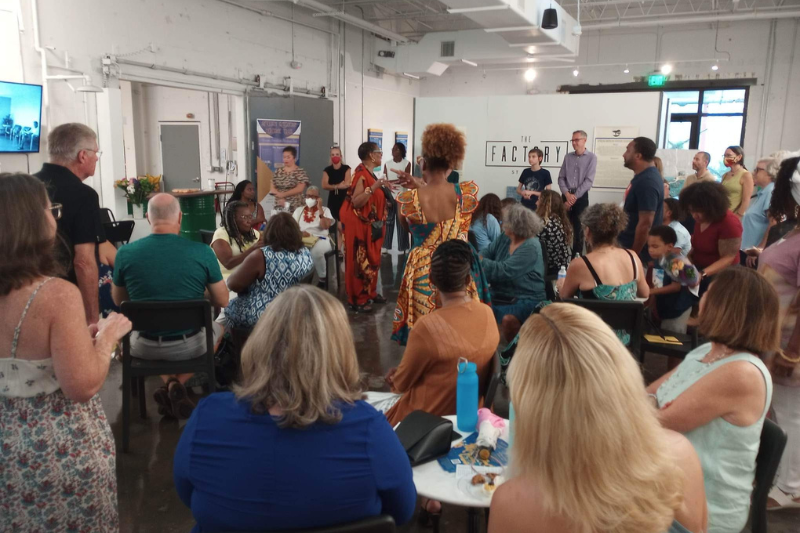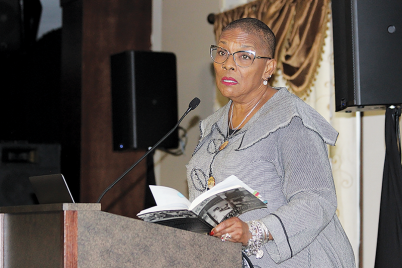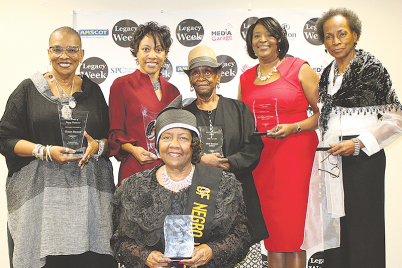The African American Heritage Association (AAHA) unveiled the digitized version of the Heritage Trail just in time for its eighth anniversary on Aug. 20 at The Factory St. Pete. | Photos courtesy of Carla Bristol
BY FRANK DROUZAS, Staff Writer
ST. PETERSBURG — The African American Heritage Association (AAHA) unveiled the digitized version of the Heritage Trail just in time for its eighth anniversary on Aug. 20 at The Factory St. Pete. Digitization included a 20-installment video series and mobile guide made possible by software donated by the Florida Holocaust Museum.
AAHA President Gwendolyn Reese said the digitization of the trail made the history and culture of St. Petersburg’s African-American community accessible to anyone who wanted to learn more. The digital trail simulates the dynamic experience of an in-person trolly or walking tour, which Reese and AAHA Vice President Jon Wilson conducted.
As a result, the video series includes narration from Reese and Wilson alongside the voices of 15 community members who are direct descendants of those who lived the history chronicled on the tour. The mobile guide includes an introduction and 20 pages of material — one page for each of the trail stops. Each page includes a video, written material, and historic photos for that particular trail stop.
To unveil the mobile guide, guests were invited to a gallery at The Factory St. Pete that housed each of the 20 trail markers as gallery-wrapped canvases. Under each canvas sits a QR code that guests can scan and get taken directly to the corresponding page in the mobile guide. Once there, you can then watch the video, read the material and flip through the historic photos for each stop.

African American Heritage Association President Gwendolyn Reese and community activist and gallerist Carla Bristol
“We must take a moment to pause and reflect on how far the trail has come,” stated Reese. “However, we have much work to do. This is just the beginning.”
Reese hosted a virtual Community Conversation — a partnership between the African American Heritage Association of St. Petersburg and Tombolo Books — days before the unveiling of the digital trail. She discussed the evolution and timeline of the Heritage Trail with AAHA members.
Community activist and gallerist Carla Bristol opened Gallerie 909 on 22nd Street, also known as the Deuces. She recalled the first anniversary of the trail, where she displayed all the posters of the trail makers in her gallery.
“People came from Naples and Tampa and that’s when I learned a lot about how these stories were the stories of other cities as well as ours,” she said.
It is important to mark this anniversary too because these stories are part of St. Pete history, she noted, and “the more we can celebrate and expose people to them, the better it is for all of us who live here and for the young people who were born here to know their history.”
The trail was completed in 2014, and AAHA member Kimberly Hinder, who helped secure the necessary $50,000 grant for the project, said, “it was one of the most rewarding projects I’ve ever worked on.”
She recalled before its completion then-Mayor Bill Foster had a vision that the city should recognize African-American sites of note. Though there had been some local landmarks before the trail, there was nothing cohesive to recognize the African-American heritage in the city.
A steering committee that included Reese, Dr. Evelyn Newman Phillips, Dr. Ray Arsenault, Tyna Middleton, Arnette Smith, the late Minson Rubin, and Rev. Wayne Thompson met to compose a list of important sites, past and present.
“We were including not only the existing buildings or sites but also significant people, as well as places that had been demolished that were no longer there, but they were still important in memory,” Hinder explained.
Hinder said the committee then discussed logistics, such as how long a walking tour should be, or if they should display two-sided panels or one-sided panels, or how the panels should even be presented.
“The exciting part was also going to the meetings at the churches,” said Dr. Evelyn Newman Phillips, a professor at Central Connecticut State University and AAHA member. “When we went to Methodist Town, that was like the highlight of all the meetings. So many people came out!”

Many people the committee ultimately interviewed for their memories of old St. Pete were elderly, and “it’s so important that memory be documented,” Phillips said. “Memory is so important for giving power and context for our lives. And once we lose our memory, we’ve lost ourselves.”
The community gave us so much, Reese said, and it was heart wrenching to have to omit certain items, documents, and pictures.
The AAHA had discussed digitizing the trail to make it more accessible, but when the pandemic hit — and the tours had to be canceled — it seemed like the perfect time to finally see it through.
“The walking tours had stopped, and the trail was just sitting there ready for people, but people were not able to access it at that time,” said Nicole Slaughter Graham, project manager for the trail digitization.
Partners such as the Foundation for a Healthy St. Petersburg and the Florida Holocaust Museum came to AAHA members and asked how they could help. After a brainstorming session, Graham recalled, they decided to create a video series so that people have remote access to the trail and its history.
“They can see the area, they can see the trail, they can hear from the descendants of the people who lived the history,” she said, adding that the digitization of the trail followed, thanks to a grant from the Foundation for a Healthy St. Petersburg.
The Florida Holocaust Museum donated the software to create the digitized mobile guide, and Slaughter Graham and her team recorded “hundreds of hours” of footage, interviewing descendants of people named on the historical markers.
“In these videos and in this mobile guide, you have Ms. Gwen, and you have Jon Wilson walking you along the trail and giving you the information, and then it’s enhanced by the community members,” she said. “They’re sharing their personal stories of their family members and their friends and their experiences, and it really is just a beautiful compilation of information and a beautiful way to experience the trail.”
Some research, Reese noted, turned up incredible stories from the comical to the tragic, such as a young Black girl being shot in the back of the head as she rode in a car driven by her friends, who were trying to escape a group of white “deputized” men barreling after them in their car, or grocer Sidney Harden who applied for a license to raise possums for meat (he was denied).
Since even teaching history in Florida schools has become contentious these days, having access to the trail becomes that much more important for young people, the members agreed, as it provides an education of sorts outside the classroom.
“We have so many people in our past,” Reese said. “So many shoulders we stand upon, and it’s so interesting how many people aren’t aware of our story. So, we’ve had the wonderful opportunity of sharing our stories.”
Bristol is offering a limited-edition series of trail marker prints in gallery-wrap canvas, signed by Reese, for $500 each or the complete collection for $10,000.
“I think some people have specific memories and feel good about certain markers and owning that could be something you have in your office or your home,” Bristol said, noting that the 24 x 36 canvases are “vibrant.”
Lorna Taylor, CEO of Premier Eye Care, purchased the collection for $10,000 and then donated it back to the AAHA. Contact Bristol at carla@thefactoryst.pete.com if you are interested in buying a piece.
Part of the interactive experience of the trail will soon include a QR code on the markers that people can scan with their phones, which will pull up a written synopsis, a video and the narration for that particular marker. Graham said the plan is to put a code on every marker along the Heritage Trail.
Until then, you can also access the digital Heritage Trail at afamheritagestpete.org.









